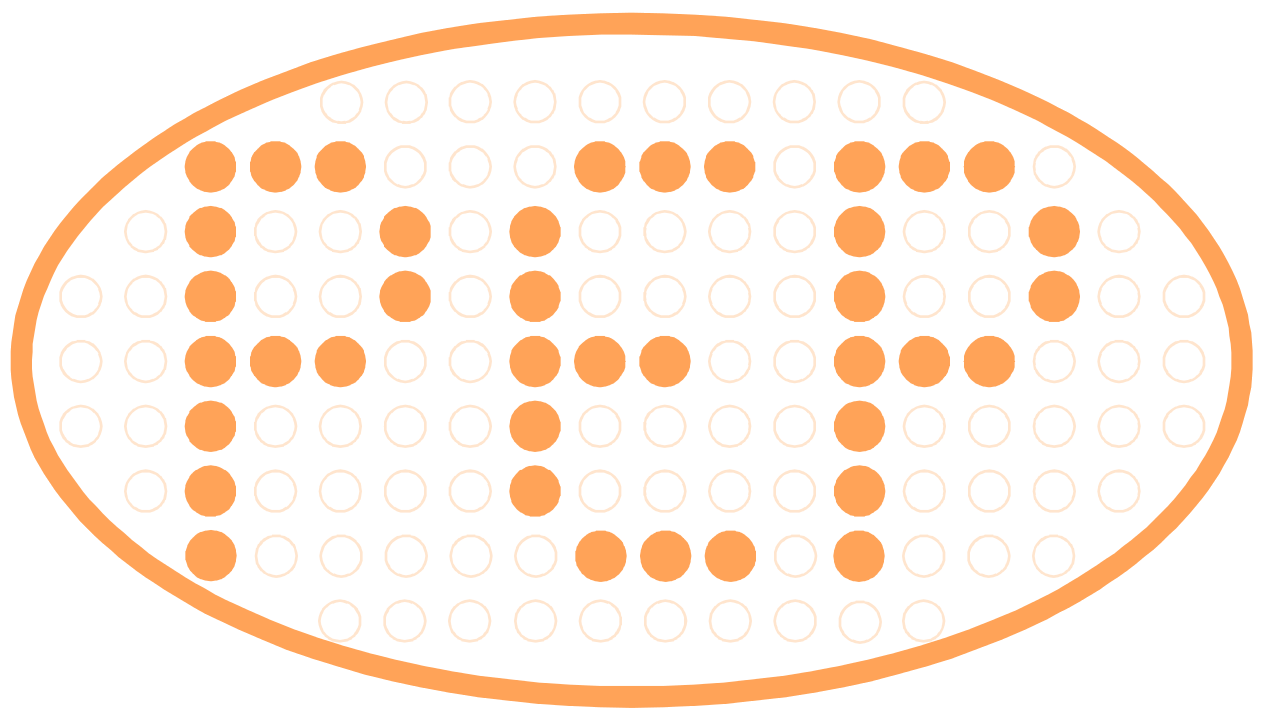Info

James R. Schmidt
Université de BourgogneLEAD-CNRS UMR5022 - Pôle AAFE
11 Esplanade Erasme
21000 Dijon, France
E-mail: james.schmidt@u-bourgogne.fr
Phone: +33 3 80 39 39 68
Fax: +33 3 80 39 57 67
About Me
I am primarily a learning psychologist, also interested in neural networks and cognitive control. Some of my specific research interests include human contingency learning, temporal contiguity, temporal learning, the Stroop effect, computational modelling, cognitive control, conflict monitoring and adaptation, attention, episodic memory, unconscious processes, learning goals, habits, music cognition, evaluative learning, stimulus-response binding, switch costs, human reasoning ability, logic, and bilingualism. I completed my B.A. with high honours in psychology and a minor in philosophy at the University of Saskatchewan in 2005, supervised by Jim Cheesman. I obtained my Master’s in 2007 and my Ph.D. in 2009 in cognitive psychology at the University of Waterloo, supervised by Derek Besner. I then worked as a postdoc at Ghent University with Jan De Houwer. I am currently a full professor of the Université de Bourgogne working in the Laboratoire d’Etude de l’Apprentissage et du Développement (LEAD). You can see my full CV here. Outside the office, I spend my free time speedsolving twisty puzzles (mostly poorly, my current collection here) or playing metal music on the guitar (also poorly).
Recent Publications
(Username: Schmidt, Password: learning)
Henry, W., & Schmidt, J. R. (in press). Stroop-like effects in pitch identification training and generalization to untrained timbres: Evidence from a contingency learning task. Music Perception. [PDF]
Iorio, C., Bigand, E., & Schmidt, J. R. (2024). Incidentally acquiring pitch-label associations with a musical contingency learning task. Collabra: Psychology, 10, Article 118806. [PDF]
Šaban, I., & Schmidt, J. R. (in press). Audio-visual Stroop matching task with first and second language colour words and colour associates. Applied Psycholinguistics. [PDF]
Weissman, D. H., & Schmidt, J. R. (2024). Proactive response preparation contributes to contingency learning: Novel evidence from force-sensitive keyboards. Psychological Research, 88, 1182–1202. [PDF]
Schmidt, J. R. (in press). Is conflict adaptation adaptive? An introduction to conflict monitoring theory and the ecological problems it faces. Quarterly Journal of Experimental Psychology. [PDF]
Postdoc
2022 – Šaban, Iva
Doctoral Students
2022-2025 – Henry, Williams
2019-2022 – Iorio, Claudia
2018-2021 – Šaban, Iva
Internship Students
2023 – Brunet, Lilou (L3 stage court)
2023 – Devillier, Amaury (L2 stage court)
2022 – Amoit, Violette (L2 stage court)
2022 – Grota, Marine (L3 stage court)
2022 – Lefaivre, Eloïse (L2 stage court)
2022 – Laviron, Monette (L2 stage court)
2020-2021 – Henry, Williams (Master 2, stage long)
2019 – Jondot, Anna (Master 2, stage long)
Matériel de cours
Psychologie cognitive, Licence 1 : CM / TD
Psychology cognitive, partie mémoire, Licence 2 : CM / TD
Psychologie cognitive B (option), Licence 3 : CM
Mémoire et cognition, Master 1 IFPE : Non disponible actuellement
Aspects émotionnels, Master 1 IFPE : Non disponible actuellement
Cognition, Master 1 Besançon : Non disponible actuellement
Learning Psychology
My main program of research focuses on basic processes in human contingency learning, binding, and temporal learning. In this work, I answer questions such as whether contingency awareness is required for contingency learning, how fast learning occurs, and the role of goals on learning. More generally, I am interested in determining how experienced stimuli, responses, and temporal (timing) information are bound together into episodes (i.e., mental representations of events), and how this trial information is stored in and retrieved from episodic memory. Contingency learning, temporal learning, binding, etc. are proposed to be the incidental result of such memory processes.
Another side of this research program is exploring how the ability of participants to easily pick up on regularities (whether consciously or unconsciously) and use this information to maximize performance often produces confounds in experiments aimed at studying wholly-unrelated mental processes. Quite frequently, experimenters introduce unintentional regularities into the task structure of experiments (e.g., covariations between stimuli and responses or differences in task pace across conditions). Participants are extremely adept at picking up on such regularities (often implicitly) and exploiting them. My goal is to understand the automatic influences of this memory retrieval on behaviour.
Related to this line of research, I developed the Parallel Episodic Processing (PEP) computational model. For more information, see the Code tab.
Recent Example Works
(Username: Schmidt, Password: learning)
Weissman, D. H., & Schmidt, J. R. (2024). Proactive response preparation contributes to contingency learning: Novel evidence from force-sensitive keyboards. Psychological Research, 88, 1182–1202. [PDF]
Schmidt, J. R. (2021). Qu’est-ce que l’apprentissage implicite ? The Conversation France. https://theconversation.com/quest-ce-que-lapprentissage-implicite-166214 [PDF]
Schmidt, J. R. (2021). Incidental learning of simple stimulus-response associations: A review of colour-word contingency learning research. Année Psychologique, 121, 77–127. [PDF]
Schmidt, J. R. (2021). Apprentissage incident des associations simples de stimulus-réponse : Revue de la recherche avec la tâche d’apprentissage de contingences couleur-mot. Année Psychologique, 121, 77–127. [PDF]
Music Cognition
In recent work, I have been applying some of my work on basic learning and timing processes to early music learning. Globally, the idea is that to master certain musical skills, a lot of repetition is needed to automatize performance. Incidental learning is particularly efficient in learning rapidly. Two key skills that we are aiming to improve are sightreading and pitch naming abilities.
One key skill that we are aiming to improve is sightreading ability. Music is typically written in standard notation. Standard notation represents various different types of information, such as the note pitches and timings. Note pitch (e.g., do, ré, mi; or C, D, E in the North American system) is represented by the vertical placement of the note on the musical staff. Sightreading is the ability to look at a musical staff and play the notes while reading. This is an important skill, but one that takes a while to master (e.g., several semesters of music training). Using incidental learning procedures, however, we have been able to show that learning to sightread can occur substantially faster.
In related work, we have been studying the learning of absolute (or perfect) pitch. This is the ability to hear a note played on an instrument and to identify the note identity (e.g., do, ré, mi) without any added context. This capacity is generally considered to be extremely rare, even among experienced musicians. Although still early, our initial results suggest that drastic improvements in pitch identification can be observed with similiar incidental learning procedures as those described above for sightreading.
Recent Example Works
(Username: Schmidt, Password: learning)
Henry, W., & Schmidt, J. R. (in press). Stroop-like effects in pitch identification training and generalization to untrained timbres: Evidence from a contingency learning task. Music Perception. [PDF]
Iorio, C., Bigand, E., & Schmidt, J. R. (2024). Incidentally acquiring pitch-label associations with a musical contingency learning task. Collabra: Psychology, 10, Article 118806. [PDF]
Schmidt, J. R., Iorio, C., & Poulin-Charronnat, B. (2023). Automatizing sight reading: Contingency proportion and task relevance in the music contingency learning procedure. Collabra: Psychology, 9, Article 89743. [PDF]
Iorio, C., Šaban, I., Poulin-Charronnat, B., & Schmidt, J. R. (2023). Incidental learning in music reading: The music contingency learning task. Quarterly Journal of Experimental Psychology, 76, 429–449. [PDF]
Schmidt, J. R. (2021). Qu’est-ce que l’apprentissage implicite ? The Conversation France. https://theconversation.com/quest-ce-que-lapprentissage-implicite-166214 [PDF]
Cognitive Control
One of my main programs of research focuses on the cognitive and attentional control literatures. For instance, I have conducted considerable research on the proportion congruent and congruency sequence (aka Gratton) effects. These two phenomena are typically interpreted in terms of conflict adaptation (or conflict monitoring). The conflict adaptation account proposes that when participants experience conflict between stimuli (e.g., between the distracting word “blue” and the target colour red in a Stroop task), they dynamically adjust attention away from the distracting word and/or toward the target colour. However, effects such as the proportion congruent and congruency sequence effects might also be explained by the learning of task regularities unrelated to conflict. In particular, I have investigated the role of episodic memory biases (e.g., feature repetition, contingency learning, and temporal learning effects) that represent confounds in these tasks. Controlling for such confounds seems to eliminate the effects, suggesting that the supposed conflict adaptation is illusory.
I have recently expanded this research out to switch costs, that is, the finding that there is a performance cost when switching from one task to another. Switch effects, too, are generally interpretted in terms of higher-order control processes, such as task set reconfiguration or task set inertia. However, some of my recent work has demonstrated that feature integration biases explain the bulk of the switch cost. As such, higher-order cognitive control processes might play a substantially smaller role in switch costs than previously assumed.
Related to this line of research, I developed the Parallel Episodic Processing (PEP) computational model. For more information, see the Code tab.
Recent Example Works
(Username: Schmidt, Password: learning)
Schmidt, J. R. (in press). Is conflict adaptation adaptive? An introduction to conflict monitoring theory and the ecological problems it faces. Quarterly Journal of Experimental Psychology. [PDF]
Schmidt, J. R. (2021). When data transformations are appropriate or even necessary: A response to Cohen-Shikora, Suh, and Bugg (2019). Timing & Time Perception, 9, 161–197. [PDF]
Schmidt, J. R., Liefooghe, B., & De Houwer, J. (2020). Erasing the homunculus as an ongoing mission: A reply to the commentaries. Journal of Cognition, 3, Article 28. [PDF]
Schmidt, J. R., Liefooghe, B., & De Houwer, J. (2020). An episodic model of task switching effects: Erasing the homunculus from memory. Journal of Cognition, 3, Article 22. [PDF]
Conflict Tasks
In one line of research, I explore basic processes in conflict tasks. This work often uses the colour-word Stroop task or conceptually similar tasks. In the Stroop task, participants identify the colour of a colour word. This creates conflict when the word and colour are incongruent (e.g., the word “orange” printed in blue) relative to when they are congruent (e.g., “orange” printed in orange). This indicates a partial failure of selective attention, as the word influences colour identification even though participants are trying to ignore it. My research in this domain explores what cognitive mechanisms are responsible for this conflict effect. For instance, is this congruency effect due to a conflict in meaning between the word and colour (semantic or stimulus conflict) or to a conflict between the responses that are suggested by the two (response conflict)?
In more recent years, we have been using the same task to better understand bilingual memory. For instance, do early language learners learn new words in a foreign language as lexical translations of the corresponding word in their first language (e.g., chien = dog) or are foreign language words strongly connected to semantic knowledge?
Recent Example Works
(Username: Schmidt, Password: learning)
Šaban, I., & Schmidt, J. R. (in press). Audio-visual Stroop matching task with first and second language colour words and colour associates. Applied Psycholinguistics. [PDF]
Šaban, I., & Schmidt, J. R. (2022). Interlinguistic conflict: Word-word Stroop with first and second language colour words. Cognitive Processing, 23, 619–636. [PDF]
Šaban, I., & Schmidt, J. R. (2021). Stimulus and response conflict from a second language: Stroop interference in weakly-bilingual and recently-trained languages. Acta Psychologica, 218, Article 103360. [PDF]
Code
PDF to JPG File Conversion
This is a very simply Java script used to convert all of the individual pages of PDF files (one or many) into individual JPG images (at 300 ppi). It was initially programmed to convert multiple choice response grids from Plubel exams into JPG images (required for the automatic coding online). To use it, the JAR file merely needs to be placed inside a folder along with another folder called “data”. The PDF files to be converted should be placed inside the data folder. Double-clicking the JAR file starts the conversion process. Note that this code is currently not programmed to do anything else (e.g., different file formats or resolutions). The source code is also available below for those who may wish to modify it.
The JAR file is here and the source code is here.
Data Merging
I programmed a free-to-use Java program for concatenating together CSV data files (e.g., created by programs like PsychoPy). The program also resorts columns if the program does not order the columns in the same way for all participants. For more information, see this page.
Reference
(Username: Schmidt, Password: learning)
Schmidt, J. R. (2021). CSVDataMerge: A simple and free program for concatenating experimental data files. Journal of Open Research Software, 9, Article 34. [PDF]
Neural Networks
I have done a lot of work with neural networks, particularly with the Parallel Episodic Processing (PEP) model that I programmed. The PEP model learns via the storage and retrieval of episodic memories. At a conceptual level, it is similar to other episodic (or instance or exemplar) models (e.g., GCM, MINERVA 2, etc.), but the PEP model is designed for simulating performance in a variety of different tasks in which reaction times (in addition to error rates) are the typical dependent variable of interest, rather than for simulating memory effects proper (e.g., item recall or recognition).
On each trial, the model stores a memory of the stimuli that were presented, the response that was made, and the time it took to respond. On subsequent trials, memories are retrieved to the extent that they are similar to the input (e.g., the same stimulus). So far, the published version of the model can engage in both contingency learning (i.e., learning what to respond) and temporal learning (i.e., learning when to respond). These mechanisms were shown to account for practice curves, decreasing Stroop effects across blocks, contingency learning effects and acquisition curves, stimulus-response binding effects, mixing costs, and word reading and colour naming asymmetries. In addition, the model also successfully simulates several findings in the cognitive control literature, including item-specific proportion congruent effects, list-level proportion congruent effects, congruency sequence effects, asymmetric list shifting effects, and context-specific proportion congruent effects. Critically, the basic learning mechanisms in the model produce these effects without appealing to the notion of conflict adaptation. More recently, we have been applying the model to instruction following and task switching.
The Java source code is available here.
References
(Username: Schmidt, Password: learning)
Schmidt, J. R., Liefooghe, B., & De Houwer, J. (2020). Erasing the homunculus as an ongoing mission: A reply to the commentaries. Journal of Cognition, 3, Article 28. [PDF]
Schmidt, J. R., Liefooghe, B., & De Houwer, J. (2020). An episodic model of task switching effects: Erasing the homunculus from memory. Journal of Cognition, 3, Article 22. [PDF]
Schmidt, J. R. (2018). Best not to bet on the horserace: A comment on Forrin and MacLeod (2017) and a relevant stimulus-response compatibility view of colour-word contingency learning asymmetries. Memory & Cognition, 46, 326–335. [PDF]
Schmidt, J. R. (2016). Context-specific proportion congruency effects: An episodic learning account and computational model. Frontiers in Psychology, 7, Aticle 1806. [PDF]
Schmidt, J. R., De Houwer, J., & Rothermund, K. (2016). The Parallel Episodic Processing (PEP) model 2.0: A single computational model of stimulus-response binding, contingency learning, power curves, and mixing costs. Cognitive Psychology, 91, 82–108. [PDF]
Schmidt, J. R. (2016). Proportion congruency and practice: A contingency learning account of asymmetric list shifting effects. Journal of Experimental Psychology: Learning, Memory, and Cognition, 42, 1496–1505. [PDF]
Schmidt, J. R., & Weissman, D. H. (2016). Congruency sequence effects and previous response times: Conflict adaptation or temporal learning? Psychological Research, 80, 590–607. [PDF]
Schmidt, J. R. (2013). Temporal learning and list-level proportion congruency: Conflict adaptation or learning when to respond? PLOS ONE, 8, e0082320. [PDF]
Schmidt, J. R. (2013). The Parallel Episodic Processing (PEP) model: Dissociating contingency and conflict adaptation in the item-specific proportion congruent paradigm. Acta Psychologica, 142, 119–126. [PDF]
Publications
(Username: Schmidt, Password: learning)
in press
Henry, W., & Schmidt, J. R. (in press). Stroop-like effects in pitch identification training and generalization to untrained timbres: Evidence from a contingency learning task. Music Perception. [PDF]
Šaban, I., & Schmidt, J. R. (in press). Audio-visual Stroop matching task with first and second language colour words and colour associates. Applied Psycholinguistics. [PDF]
Schmidt, J. R. (in press). Is conflict adaptation adaptive? An introduction to conflict monitoring theory and the ecological problems it faces. Quarterly Journal of Experimental Psychology. [PDF]
2024
Iorio, C., Bigand, E., & Schmidt, J. R. (2024). Incidentally acquiring pitch-label associations with a musical contingency learning task. Collabra: Psychology, 10, Article 118806. [PDF]
Weissman, D. H., & Schmidt, J. R. (2024). Proactive response preparation contributes to contingency learning: Novel evidence from force-sensitive keyboards. Psychological Research, 88, 1182–1202. [PDF]
2023
Schmidt, J. R., Iorio, C., & Poulin-Charronnat, B. (2023). Automatizing sight reading: Contingency proportion and task relevance in the music contingency learning procedure. Collabra: Psychology, 9, Article 89743. [PDF]
Iorio, C., Šaban, I., Poulin-Charronnat, B., & Schmidt, J. R. (2023). Incidental learning in music reading: The music contingency learning task. Quarterly Journal of Experimental Psychology, 76, 429–449. [PDF]
2022
Šaban, I., & Schmidt, J. R. (2022). Interlinguistic conflict: Word-word Stroop with first and second language colour words. Cognitive Processing, 23, 619–636. [PDF]
2021
Schmidt, J. R. (2021). Incidental learning of simple stimulus-response associations: A review of colour-word contingency learning research. Année Psychologique, 121, 77–127. [PDF]
Schmidt, J. R. (2021). CSVDataMerge: A simple and free program for concatenating experimental data files. Journal of Open Research Software, 9, Article 34. [PDF]
Schmidt, J. R. (2021). Qu’est-ce que l’apprentissage implicite ? The Conversation France. https://theconversation.com/quest-ce-que-lapprentissage-implicite-166214 [PDF]
Šaban, I., & Schmidt, J. R. (2021). Stimulus and response conflict from a second language: Stroop interference in weakly-bilingual and recently-trained languages. Acta Psychologica, 218, Article 103360. [PDF]
Schmidt, J. R. (2021). Apprentissage incident des associations simples de stimulus-réponse : Revue de la recherche avec la tâche d’apprentissage de contingences couleur-mot. Année Psychologique, 121, 77–127. [PDF]
Schmidt, J. R. (2021). When data transformations are appropriate or even necessary: A response to Cohen-Shikora, Suh, and Bugg (2019). Timing & Time Perception, 9, 161–197. [PDF]
2020
Schmidt, J. R., Liefooghe, B., & De Houwer, J. (2020). Erasing the homunculus as an ongoing mission: A reply to the commentaries. Journal of Cognition, 3, Article 28. [PDF]
Schmidt, J. R., Liefooghe, B., & De Houwer, J. (2020). An episodic model of task switching effects: Erasing the homunculus from memory. Journal of Cognition, 3, Article 22. [PDF]
Schmidt, J. R., Giesen, C. G., & Rothermund, K. (2020). Contingency learning as binding? Testing an exemplar view of the colour-word contingency learning effect. Quarterly Journal of Experimental Psychology, 73, 739–761. [PDF]
Schmidt, J. R., De Houwer, J., & Moors, A. (2020). Learning habits: Does overtraining lead to resistance to new learning? Collabra: Psychology, 6, Article 21. [PDF]
Liefooghe, B., Hughes, S., Schmidt, J. R., & De Houwer, J. (2020). Stroop-like effects for derived stimulus-stimulus relations. Journal of Experimental Psychology: Learning, Memory, and Cognition, 46, 327–349. [PDF]
Giesen, C. G., Schmidt, J. R., & Rothermund, K. (2020). The law of recency: An episodic stimulus-response retrieval account of habit acquisition. Frontiers in Psychology, 10, Article 2927. [PDF]
2019
Braem, S., Bugg, J. M., Schmidt, J. R., Crump, M. J. C., Weissman, D. H., Notebaert, W., & Egner, T. (2019). Measuring adaptive control in conflict tasks. Trends in Cognitive Sciences, 23, 769–783. [PDF]
Schmidt, J. R., & De Houwer, J. (2019). Correction to Schmidt and De Houwer (2012). Experimental Psychology, 66, 255–256. [PDF]
Schmidt, J. R. (2019). Evidence against conflict monitoring and adaptation: An updated review. Psychonomic Bulletin & Review, 26, 753–771. [PDF]
Schmidt, J. R., & Lemercier, C. (2019). Context-specific proportion congruent effects: Compound-cue contingency learning in disguise. Quarterly Journal of Experimental Psychology, 72, 1119–1130. [PDF]
Schmidt, J. R., & De Houwer, J. (2019). Cue competition and incidental learning: No blocking or overshadowing in the colour-word contingency learning procedure without instructions to learn. Collabra: Psychology, 5, Article 15. [PDF]
2018
Schmidt, J. R., Augustinova, M., & De Houwer, J. (2018). Category learning in the colour-word contingency learning paradigm. Psychonomic Bulletin & Review, 25, 658–666. [PDF]
Schmidt, J. R. (2018). Best not to bet on the horserace: A comment on Forrin and MacLeod (2017) and a relevant stimulus-response compatibility view of colour-word contingency learning asymmetries. Memory & Cognition, 46, 326–335. [PDF]
Schmidt, J. R., Hartsuiker, R. J., & De Houwer, J. (2018). Interference in Dutch-French bilinguals: Stimulus and response conflict in intra- and interlingual Stroop. Experimental Psychology, 65, 13–22. [PDF]
2017
Schmidt, J. R. (2017). Time-out for conflict monitoring theory: Preventing rhythmic biases eliminates the list-level proportion congruent effect. Canadian Journal of Experimental Psychology, 71, 52–62. [PDF]
Lemercier, C., Simoës-Perlant, A., Schmidt, J. R., & Boujon, C. (2017). Stroop interference and development: Influence of expectation on color-naming response times. European Review of Applied Psychology, 67, 43–50. [PDF]
2016
Schmidt, J. R. (2016). Context-specific proportion congruency effects: An episodic learning account and computational model. Frontiers in Psychology, 7, Aticle 1806. [PDF]
Schmidt, J. R., De Houwer, J., & Rothermund, K. (2016). The Parallel Episodic Processing (PEP) model 2.0: A single computational model of stimulus-response binding, contingency learning, power curves, and mixing costs. Cognitive Psychology, 91, 82–108. [PDF]
Schmidt, J. R., & De Houwer, J. (2016). Time course of colour-word contingency learning: Practice curves, pre-exposure benefits, unlearning, and relearning. Learning and Motivation, 56, 15–30. [PDF]
Schmidt, J. R. (2016). Proportion congruency and practice: A contingency learning account of asymmetric list shifting effects. Journal of Experimental Psychology: Learning, Memory, and Cognition, 42, 1496–1505. [PDF]
Schmidt, J. R., & Weissman, D. H. (2016). Congruency sequence effects and previous response times: Conflict adaptation or temporal learning? Psychological Research, 80, 590–607. [PDF]
Schmidt, J. R., & De Houwer, J. (2016). Contingency learning tracks with stimulus-response proportion: No evidence of misprediction costs. Experimental Psychology, 63, 79–88. [PDF]
Schmidt, J. R. (2016). Temporal learning and rhythmic responding: No reduction in the proportion easy effect with variable response-stimulus intervals. Frontiers in Psychology, 7, Article 634. [PDF]
Schmidt, J. R., & Liefooghe, B. (2016). Feature integration and task switching: Diminished switch costs after controlling for stimulus, response, and cue repetitions. PLOS ONE, 11, e0151188. [PDF]
2015
Schmidt, J. R., & Weissman, D. H. (2015). Contingent attentional capture triggers the congruency sequence effect. Acta Psychologica, 159, 61–68. [PDF]
Schmidt, J. R., Notebaert, W., & Van Den Bussche, E. (2015). Is conflict adaptation an illusion? Frontiers in Psychology, 6, Article 172. [PDF]
2014
Schmidt, J. R. (2014). Contingency and congruency switch in the congruency sequence effect: A reply to Blais, Stefanidi, and Brewer (2014). Frontiers in Psychology, 5, Article 1405. [PDF]
Schmidt, J. R., De Schryver, M., & Weissman, D. H. (2014). Removing the influence of feature repetitions on the congruency sequence effect: Why regressing out confounds from a nested design will often fall short. Journal of Experimental Psychology: Human Perception and Performance, 40, 2392–2402. [PDF]
Schmidt, J. R., Lemercier, C., & De Houwer, J. (2014). Context-specific temporal learning with non-conflict stimuli: Proof-of-principle for a learning account of context-specific proportion congruent effects. Frontiers in Psychology, 5, Article 1241. [PDF]
Schmidt, J. R., & Weissman, D. H. (2014). Congruency sequence effects without feature integration or contingency learning confounds. PLOS ONE, 9, e0102337. [PDF]
Schmidt, J. R. (2014). Contingencies and attentional capture: The importance of matching stimulus informativeness in the item-specific proportion congruent task. Frontiers in Psychology, 5, Article 540. [PDF]
Schmidt, J. R. (2014). List-level transfer effects in temporal learning: Further complications for the list-level proportion congruent effect. Journal of Cognitive Psychology, 26, 373–385. [PDF]
2013
Schmidt, J. R. (2013). Temporal learning and list-level proportion congruency: Conflict adaptation or learning when to respond? PLOS ONE, 8, e0082320. [PDF]
Schmidt, J. R. (2013). Questioning conflict adaptation: Proportion congruent and Gratton effects reconsidered. Psychonomic Bulletin & Review, 20, 615–630. [PDF]
Schmidt, J. R., Cheesman, J., & Besner, D. (2013). You can’t Stroop a lexical decision: Is semantic processing fundamentally facilitative? Canadian Journal of Experimental Psychology, 67, 130–139. [PDF]
Schmidt, J. R. (2013). The Parallel Episodic Processing (PEP) model: Dissociating contingency and conflict adaptation in the item-specific proportion congruent paradigm. Acta Psychologica, 142, 119–126. [PDF]
2012
Schmidt, J. R., & De Houwer, J. (2012). Learning, awareness, and instruction: Subjective contingency awareness does matter in the colour-word contingency learning paradigm. Consciousness and Cognition, 21, 1754–1768. [PDF]
Schmidt, J. R., & De Houwer, J. (2012). Contingency learning with evaluative stimuli: Testing the generality of contingency learning in a performance paradigm. Experimental Psychology, 59, 175–182. [PDF]
Schmidt, J. R., & De Houwer, J. (2012). Adding the goal to learn strengthens learning in an unintentional learning task. Psychonomic Bulletin & Review, 19, 723–728. [PDF]
Schmidt, J. R., & De Houwer, J. (2012). Does temporal contiguity moderate contingency learning in a speeded performance task? Quarterly Journal of Experimental Psychology, 65, 408–425. [PDF]
Schmidt, J. R. (2012). Human contingency learning. In N. M. Seal (Ed.), Encyclopedia of the sciences of learning (pp. 1455–1456). New York: Springer. [PDF]
2011
Schmidt, J. R., & De Houwer, J. (2011). Now you see it, now you don’t: Controlling for contingencies and stimulus repetitions eliminates the Gratton effect. Acta Psychologica, 138, 176–186. [PDF]
2010
Schmidt, J. R., De Houwer, J., & Besner, D. (2010). Contingency learning and unlearning in the blink of an eye: A resource dependent process. Consciousness and Cognition, 19, 235–250. [PDF]
2008
Schmidt, J. R., & Besner, D. (2008). The Stroop effect: Why proportion congruent has nothing to do with congruency and everything to do with contingency. Journal of Experimental Psychology: Learning, Memory, and Cognition, 34, 514–523. [PDF]
Schmidt, J. R., & Thompson, V. A. (2008). “At least one” problem with “some” formal reasoning paradigms. Memory & Cognition, 36, 217–229. [PDF]
2007
Schmidt, J. R., Crump, M. J. C., Cheesman, J., & Besner, D. (2007). Contingency learning without awareness: Evidence for implicit control. Consciousness and Cognition, 16, 421–435. [PDF]
2006
Risko, E. F., Schmidt, J. R., & Besner, D. (2006). Filling a gap in the semantic gradient: Color associates and response set effects in the Stroop task. Psychonomic Bulletin & Review, 13, 310–315. [PDF]
2005
Schmidt, J. R., & Cheesman, J. (2005). Dissociating stimulus-stimulus and response-response effects in the Stroop task. Canadian Journal of Experimental Psychology, 59, 132–138. [PDF]
Theses
Schmidt, J. R. (2019). Experimental and neural network investigations in learning, attention, and cognitive control [HDR thesis, Université Bourgogne Franche-Comté]. [PDF]
Schmidt, J. R. (2009). Contingency learning and unlearning in the blink of an eye: A resource dependent process [Doctoral thesis, University of Waterloo]. [PDF]
Schmidt, J. R. (2007). The Stroop effect: Why proportion congruent has nothing to do with congruency and everything to do with contingency [Master’s thesis, University of Waterloo]. [PDF]





